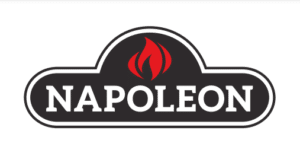In part one of this two-part blog series, we went over some basics on gas fireplaces and chimneys. Modern gas fireplaces don’t necessarily require a chimney setup to function, though they will require ventilation of some kind – having a basic understanding of your options here can be quite helpful if you’re thinking about any gas fireplace installation or upgrade.
At Comfort Solutions Fireplace, we’re here to offer a wide range of modern gas fireplaces to clients around Salt Lake City and other parts of Utah, plus assistance with all related areas like these. Today’s part two of our series will look at how to consider existing chimneys when looking into a gas fireplace, plus some other tips on maintaining a gas fireplace chimney if your setup does utilize one.
Using an Existing Chimney
In many cases, it will be easily possible to convert an existing masonry fireplace and its chimney into a gas fireplace setup. This is especially true if you’re using direct vent fireplaces, which can easily be installed in the same general area as an older wood-burning unit.
In these cases, your installer will likely replace the damper with a sealed glass door that’s part of the new venting system – this door will generally remain closed except when you’re lighting or tending to the flames, keeping all emissions and air drafts out of your home.
Re-Lining
In some cases where you’re using an existing chimney, it may be necessary for your installer to re-line the chimney with a new, smaller-diameter flue liner that’s designed specifically for gas fireplaces. This will help limit draft issues and reduce the risk of carbon monoxide buildup, plus keep your fireplace more efficient overall.
Maintaining Gas Fireplace Chimneys
For those who do have a gas fireplace chimney in place, there are several basic maintenance areas to consider:
- Annual Inspection: You should schedule an annual inspection for your gas fireplace chimney with a certified professional. This will help identify any potential issues before they become larger, costlier problems.
- Cleaning: Your chimney should be cleaned at least once a year to remove any built-up debris or blockages that could hinder proper ventilation and pose safety hazards.
- Carbon Monoxide Detection: As with any gas appliance, it’s important to have carbon monoxide detectors installed near your fireplace and throughout your home. These should be tested regularly to ensure they’re functioning properly.
- Professional Repairs: If any issues are found during the inspection or cleaning process, be sure to enlist a professional for repairs rather than attempting them yourself – this is not only safer, but will prevent potential damage to your fireplace.
At Comfort Solutions Fireplace, we pride ourselves on being a one-stop shop for all gas fireplace needs. From consultation on the right type of fireplace to installation, maintenance and accessories, we’re here to help. Contact us today for help with any of our gas fireplaces, outdoor fireplaces, or other custom fireplace needs around Utah!

